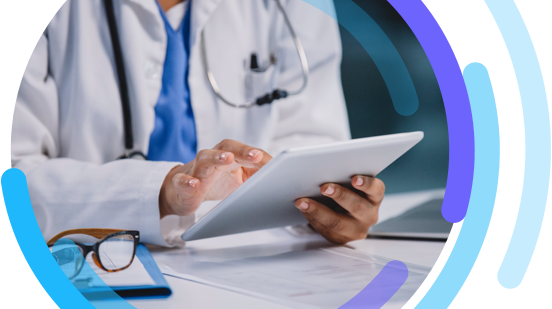Download the Doctor Discussion Guide
It may help you have better conversations with your care team and get the GVHD information you need along the way.
Intended for US residents only
 Intended for US residents only
Intended for US residents only


While your care team will take steps to help you avoid an infection, you should be vigilant as well, especially about informing prospective visitors. Infections after a stem cell transplant can be serious and also increase your risk for developing acute GVHD.
Here are some tips to share with visitors:
While your care team will monitor you closely, it’s important to speak openly about any discomfort or other symptoms you’re experiencing after transplant. Many of these can be managed, but your team relies on you to let them know what you’re experiencing right away. Early symptoms of acute GVHD, for instance, can be subtle but progress quickly. So be on alert, and speak up. If you’re struggling with any troublesome emotions, such as worry or stress, mention these as well. Your care team likely includes a social worker who can offer help and support as well as practical advice and resources to help with concerns you may have now.
Here are some questions you may also want to ask your team during your in-hospital recovery:

Create a regular regimen of basic activities for your day. For example, get dressed and make your bed in the mornings. Do some reading or journaling every afternoon after lunch. Watch a program or make calls in the evenings. Re-establishing daily rhythm and routine can be helpful. Once you’re able, a little daily exercise may also help your recovery. Stationary bikes are available at some transplant centers, or you can walk the hallways on your floor to help begin rebuilding strength and stamina. Ask your care team what they recommend and what’s available to you.
While your care team will monitor you closely, it’s important to speak openly about any discomfort or other symptoms you’re experiencing after transplant. Many of these can be managed, but your team relies on you to let them know what you’re experiencing right away. Early symptoms of acute GVHD, for instance, can be subtle but progress quickly. So be on alert, and speak up. If you’re struggling with any troublesome emotions, such as worry or stress, mention these as well. Your care team likely includes a social worker who can offer help and support as well as practical advice and resources to help with concerns you may have now.
Here are some questions you may also want to ask your team during your in-hospital recovery:

Download the Doctor Discussion Guide
It may help you have better conversations with your care team and get the GVHD information you need along the way.


Did you know?
Some transplant centers now create personalized survivorship care plans for their patients before they leave the hospital. These plans include:
A recent study comparing patients after transplant found that those who received survivorship care plans reported significantly less anxiety and better quality of life. Ask your transplant team if they’ll prepare a plan for you.

I had GVHD, a head to toe rash, not long after leaving the hospital. And I still have some skin and mouth GVHD two years later…. I try to stay positive, focus on today and tomorrow, bringing joy to people’s lives and finding joy in mine.
Josh O.
2018 transplant recipient


Since infection risk remains high for several months after transplant, your loved one will need extra protection at home against common household germs, mold, and mildew. Just before their return is a good time to tackle this chore. This is a perfect time to ask your support team for help!
Now is a good time to:

Before your loved one is released from the hospital, nurses and other staff members typically provide education about their medicines, complications to watch for, dietary needs, and more. As a primary caregiver, your role in managing these is essential and can make a difference in your loved one’s recovery!
Different centers handle this training differently, so be sure you know what to expect ahead of time so you can plan accordingly. Take advantage of any special caregivers-only sessions that some centers offer. They can provide valuable tips on managing new tasks or challenges you may not anticipate. These sessions can also be good opportunities to ask questions or connect with other caregivers.
Now is a good time to:

Stay up-to-date on GVHD insights and resources
Sign up for occasional email updates and get a GVHD Medical Alert card you can share with new healthcare providers, pharmacists, and others who need to understand your health status.

